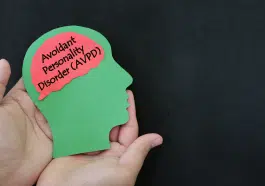Trauma-informed mental health care doesn’t focus on the notion of “What’s wrong with you?” Instead, it concentrates more on “What happened to you?” In essence, a trauma-informed approach to care encourages the idea that health care organizations and teams must have a whole picture of a patient’s life experience and circumstances, both past and present. That way, mental health practitioners can provide helpful services for those coping with mental health issues. By implementing trauma-informed practices, patients can find more engaged and have better health outcomes. In addition, it can reduce avoidable care and extra costs within the health care and social service sectors.
All in all, trauma-informed care aims to do the following:
- Acknowledge the impact that trauma has had on a person and understand the paths for recovery
- Being better equipped to identify the signs and symptoms of trauma in patients, their families, and the staff
- Incorporate knowledge about trauma into a practice’s policies and procedures
- Avoid re-traumatization someone
What is Trauma-Informed Care?
Trauma-Informed Practice is a framework based on strengths rooted in understanding how impactful trauma can be on a person. In addition, it focuses on physical, psychological, and emotional safety for everyone involved. It also provides opportunities for trauma survivors to recreate a sense of security, control, and empowerment.
Why Is This Type of Care Necessary?
There are many reasons why trauma-informed care is used and effective. Here are some of the main ones:
- It integrates an understanding of trauma into each aspect of care so that mental health practitioners can work in the most effective way possible with children, youth, families, and other patients.
- It fosters a safer environment for everyone involved in the mental health care process.
- It encourages approaches that avoid re-traumatizing individuals and support safety, choice, and control in the healing process.
What Are Some of the Crucial Approaches for Creating Trauma-Informed Mental Health Care?
Here are a few ideas about how a mental health care provider may approach trauma-informed mental health care:
- They may lead and communicate with the patient about their healing and transformation process
- Involve the patient in the planning of their care
- Provide training in clinical settings and to non-clinical staff members
- Creating a safe environment for the patient, staff, clinician, and others involved in the process
- Preventing secondary trauma responses in clinicians and staff
- Hiring other trauma-informed clinicians
- Taking screening measures for trauma
- Training staff in various approaches for trauma-informed treatment
- Reaching out to partners and organizations
Multiple principles, such as: also guide many trauma-informed practices
- Safety
- Trust
- Transparency
- Peer support
- Collaboration
- Empowerment
- Encouraging a client to use their voice and make choices for themselves
- Learning about cultural, historical, and gender issues
What Are Some Principles of a Trauma-Informed Approach?
Trauma can come up in people’s day-to-day lives more often than can be recognized, often in various ways. By understanding trauma responses, clinicians and mental health practitioners can help their patients even more. Here are some common trauma responses:
Fight
The fight response is when someone engages in self-preservation no matter who they were hurt by. Sometimes, the flight response can be beneficial and necessary, like in immediate danger or responding to a threat. However, non-life-threatening but trauma-inducing situations can cause an increased heart rate, anxiety, increased perspiration, tremor, and increased blood glucose concentrations.
Flight
Flight is when you will flee from the situation when a threat doesn’t seem possible to overcome in a fight.
Freeze
The freeze response is when you feel stuck in a specific part of the body during a traumatic situation, and it can be challenging to move. You may feel cold or numb, experience physical stiffness or heavy limbs, decreased heart rate, more restricted breathing, or hold your breath. There can also be an intense sense of dread.
Attach-cry
Attachment cry is when a person goes to the nearest person and says, “See me! Hear me! Save me!” This phrasing is not necessarily literal, and people often do it non-verbally.
Submit
A submit response, aka a ‘fawn,’ ‘be-friend,’ or ‘submit’ response, happens when survival depends on appeasing the aggressor. This response is typical during hostage situations, childhood abuse, sexual trauma, ritual abuse, torture, domestic abuse, and many more.
Trauma-informed Care Resources
Like the Substance Abuse and Mental Health Services Administration (SAMHSA), many credible resources abide by trauma-informed practice principles like the Four R’s. Here is a description of the Four R.’s from this organization:
- An organization-wide realization, or understanding, of how trauma affects people.
- The ability to recognize the signs of trauma.
- A system-wide response to trauma informs all behaviors, language, programs, and policies.
- Resisting re-traumatization of patients, clients, and staff. Organizations can unintentionally create conditions that will re-traumatize people.
The following resources are also helpful when it comes to trauma-informed care:
- Healing Families, Helping Systems: A Trauma-Informed Practice Guide for Working with Children, Youth and Families
- Trauma-Informed Practice Guide















